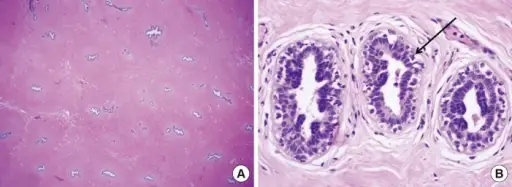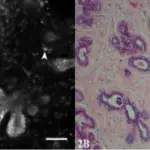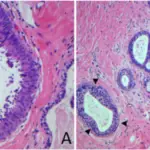Gynecomastia is the benign enlargement of the male breast, typically presenting as a palpable subareolar mass. Histologically, identical gynecomastoid hyperplasia can be seen in the female breast.
What is the Pathology of Gynecomastia?
The pathology of gynecomastia is:
-Etiology: The cause of gynecomastia is imbalance of estrogens and androgens.
-Genes involved: p63
-Pathogenesis: The sequence of events that lead to gynecomastia is that it seems to primarily result from an imbalance of androgenic and estrogenic influences on breast tissue. Estrogens stimulate the proliferation of breast tissue. Androgens inhibit.
-Morphology: The morphology associated with gynecomastia is enlarged breast tissue.
-Histology: The morphology associated with gynecomastia shows biphasic epithelial with stromal fragments in the background of scattered single bipolar nuclei.
How does Gynecomastia Present?
Patients with gynecomastia are typically male with enlarged breast tissue.
How is Gynecomastia Diagnosed?
Gynecomastia is diagnosed through histologic changes.
How is Gynecomastia Treated?
Gynecomastia is treated medically with aromatase inhibitor, anti-estrogen, and androgen therapy (tamoxifen, danazol). Surgical intervention may be utilized as well.
What is the Prognosis of Gynecomastia?
The prognosis of gynecomastia is fair.



